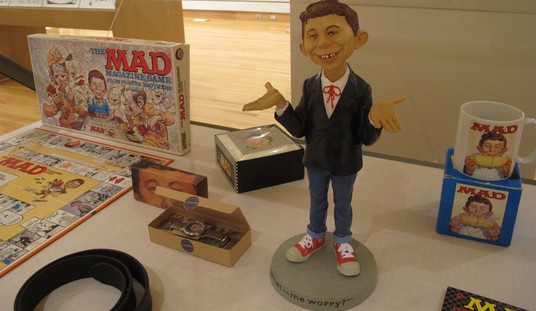
Where is Lord Elgin when you need him? In the early 19th century, Thomas Bruce, the 7th Earl of Elgin, was serving as British ambassador to the Ottoman Empire. Exercising fiduciary responsibility for the cultural patrimony of the West was not high on the Muslims’ list of priorities. In Athens, the art and architecture of the Acropolis was mouldering. One typical practice was burning classical sculptures to obtain lime for building. Horrified, Elgin connived with local authorities to get export permits to remove some surviving treasures, including the famous Parthenon friezes, and have them transported to Britain. He spent about £70,000 of his own money to rescue the marbles, an immense sum. In 1816, Parliament voted to purchase the friezes, which depict the battle between the the Centaurs and the Lapiths, an allegory of the perennial battle between culture and barbarism. Although controversy has dogged Elgin’s actions from the beginning, the truth is that had the Parthenon marbles been left on the Acropolis, it is likely that they would not have survived the ravages of neglect, vandalism, and pollution. Elgin’s bold act of enlightened cultural imperialism saved a priceless bit of classical art from the maw of cultural primitivism.
The latest news out of Detroit put me in mind of Lord Elgin. In 1960, Detroit was the most prosperous city in the United States, which means that it was one of the most prosperous cities in the world. What happened to Detroit provides an answer for those wishing to know how long it takes to ruin a great city: the answer is one generation. In What Doomed Detroit, Kevin Williamson chronicles the swift and definitive fall of that once-great city. In 1960, Detroit was Motor City: home to the dynamic U.S. auto industry, which was providing wheels for the world. By 2013, Detroit was bankrupt. On July 18 of that year, the city filed the largest municipal bankruptcy in U.S. history, estimated at between $18-$20 billion.
What happened? In a word, Democrats. If you want another word, try unions. Together, they ruined the city. “Detroit,” Williamson notes, was “like many similar cities:”
The concentration of poverty and related social dysfunction in its inner city, in no small part a legacy of the explosion of the city’s black population during the Great Migration, which saw Detroit’s black population soar from 6,000 in 1910 to 120,000 in 1929, and from 1.2 percent of the population in 1910 to about 30 percent of the population by [1961]. It is one of the great ironies of American history that wherever black Americans go, from the Jim Crow South to the great industrial cities, they are persecuted by the Democratic party, and then help to entrench the power of that party.
So here we are: one basket case of a city and a huge pile of debt, thanks to the “progressive” policies of cynical Democrats. There’s not much of value left in Detroit. Perhaps its greatest asset is the Detroit Institute of Arts. The museum is not a private institution. It is owned by the city. And, nota bene, its collection has been valued at $4.6 billion.
The fate of Detroit was a subject of conversation at a dinner party in the northwest corner of Connecticut last night. The most creative suggestion, what I think of as the Elgin option, was to find some enterprising philanthropist, à la Lord Elgin, to rescue the art from the museum, install it somewhere safe, somewhere with less of a Third-World atmosphere, and then send the proceeds of the sale back to Detroit to satisfy some portion of the demands of the creditors.
My friend was not the first person to come up with this idea. And it is no surprise that the prospect of selling the city’s treasures is not universally popular in Detroit. But the hard fact is that the city is in bankruptcy. In bankruptcy, one sells assets in an effort to satisfy legitimate creditors.
The scheme has a lot to recommend it. I don’t see it happening through the good offices of a single individual. Rather, the city ought to arrange for and institution like Sotheby’s or Chrsitie’s to convene a grand auction. Invite all the Bill Gateses, Warren Buffetts, and George Soroses to the party. Be sure to include the Russian “oligarchs” (that’s Greek for “thugs”) and oil-rich Middle East emirs, sheikhs, and sultans. Have a day-long auction and raise some serious money to pay off some of the city’s creditors. This would have several advantages. Not only would it raise a lot of money. It would also be a salutary lesson, a moral admonition, about the the perils of “progressive” profligacy. What’s not to like?









Join the conversation as a VIP Member